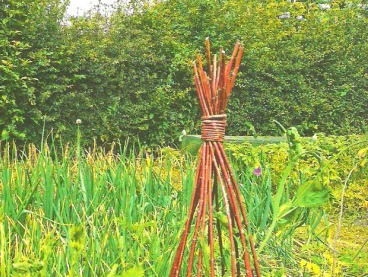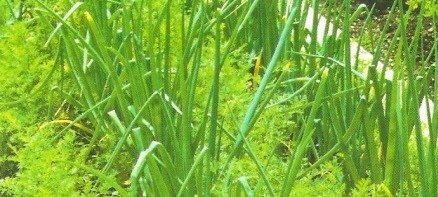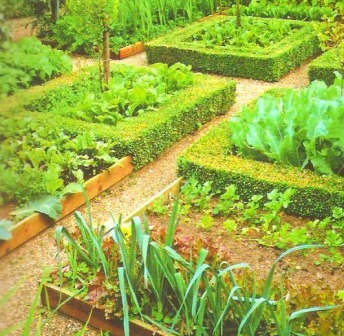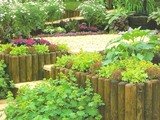|
Planning a GardenPlanning a garden involves some good soil preparation, choosing the best site and deciding what you want to grow. Once you get these factors correct when beginning a garden, everything can go at a smooth pace and that’s the idea. Choosing the Best Site When Planning a GardenTo easily grow vegetables and get good crops, a sunny spot with well-drained soil that’s relatively moisture-retentive is the ideal condition. If there is too much shade, the vegetable plants will struggle. However, if the space for vegetables confined to the back of the garden is not sunny enough, then don’t worry yourself. Crops can fit very well among flowers and other ornamentals.
Using LimeAdding lime is necessary as a lot of vegetables do very well on a neutral to a slightly alkaline soil. Protecting your CropsKeep Windy Conditions in Mind- Windy locations are often avoided as that can cause a big decrease in cropping. Slight to moderately windy locations can decrease yields by about 30%. Deciding how you’re going to protect your crops is an important factor in vegetable garden planning. If you have no choice but to grow your vegetables in a windy spot, erect a windbreak fence or plant a shrubby windbreak before you start. Whatever you decide to use, ensure that it’s at least partially permeable.  Having a solid wall may cause problems as the wind swirls over it. It’s a really worthwhile effort as every 3 foot (1m) height of windbreak supplies about 16 feet (5m) of protection behind it. A dense hedge slows the wind while decreasing loss of moisture from plants and increasing air temperatures in the sheltered area. Considering Crop Rotation When Planning a GardenIt doesn’t matter how small your garden area is as it’s always worth using a rotation system. You can move your crops around 3 or 4 beds or in areas in sequence. However, avoid planting the same or a closely related crop in the same ground for 2 years straight. This helps to reduce the appearance of vegetable garden pests and maintain fertility. Rotating your Crops for Weed ControlRotation can help with weeding. If your plot is weedy, why not grow some potatoes in it. They have an excellent weed-smothering effect that can really save you some time. That also makes them a good crop to precede a difficult to weed crop such as garlic for example.  Vegetable companion planting tends to confuse pests’ sense of smell as well as their visual targeting of your crops. Creating a Deep BedYou can set up a deep bed system beginning with very thorough soil improvement while using a lot of organic matter. Try to not disturb the soil over the coming years. Only do so when planting and only add organic matter to the soil surface. Gardening this way can save you a lot of work. Here’s how… First of all, there is less digging involved and secondly as the soil is not interrupted by any digging, dormant weed seeds that are in the soil don’t germinate. They will only germinate if the soil is dug over. Building Raised Beds Establishing raised beds is determined by the condition of the soil. If it’s stony, heavy, or light and sandy and you’re unable to improve it by the common methods of digging in organic matter, then you can consider creating raised beds. Sink 6 inch by 1 inch (15cm by 3cm) boards about 2 inches (5cm) into the soil as edging and then fill with a more appropriate soil. If you don’t need to step into them, raised beds can be planted more densely than open ground. Organic Garden Pest ControlThere are benefits to growing onions and carrots together and that’s something a classic rotation system wouldn’t allow. If you would like to decrease the risk of carrots getting carrot fly and onions getting onion fly, grow these 2 crops together on the same plot. You can probably try them in alternating rows. The smell of the carrots masks and the smell of the onions will make these crops less likely to be disturbed by these pests. The Dos When Preparing a Garden1. Recycle all of your garden and household wastes for composting and reuse. 2. Try growing a wide variety of plants to maximize the natural system of checks and balances. 3. Create a special habitat for birds and animals, especially by providing water through ponds and pools. 4. Try to avoid the use of all herbicides. You can use some of the methods suggested here in weed control. These methods not only involve a lot of work but are safe as well. 5. Refrain from using most insecticides which are not quite necessary. There are a few of the least harmful ones that can only be used as a last resort though. See insects control for more info. 6. Avoid the use of most fungicides. 7. Experiment with companion planting to keep pests and diseases away. The Don’ts When Planning a Garden1. Try to limit the use of soluble fertilizers, however, they can be used if they’re diluted and watered onto the grass in spring. That’s where they’ll be taken up rapidly with minimum danger of run-off. 2. Try to stay away from peat. 3. Avoid the use of unecological plants such as imported wild bulbs and bedding plants. 4. Using plastic products is not a good idea as there are lots of natural and better alternatives available. These are the factors involved in planning a garden. You see planning a garden can make your gardening project very easy for you. Once you follow these factors you shouldn’t have any need to worry, after all a successful edible garden requires some excellent garden planning.
|









